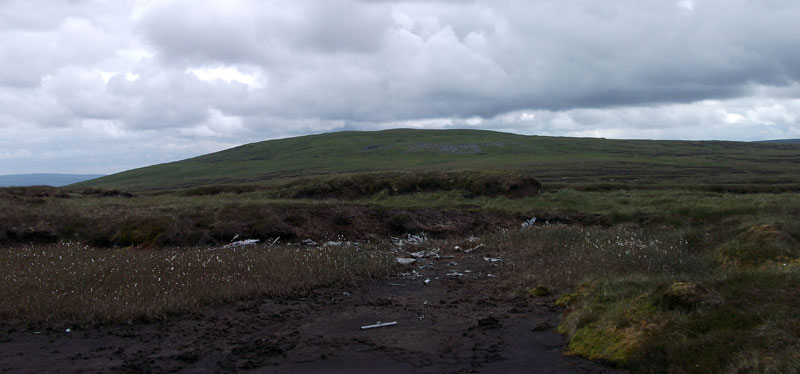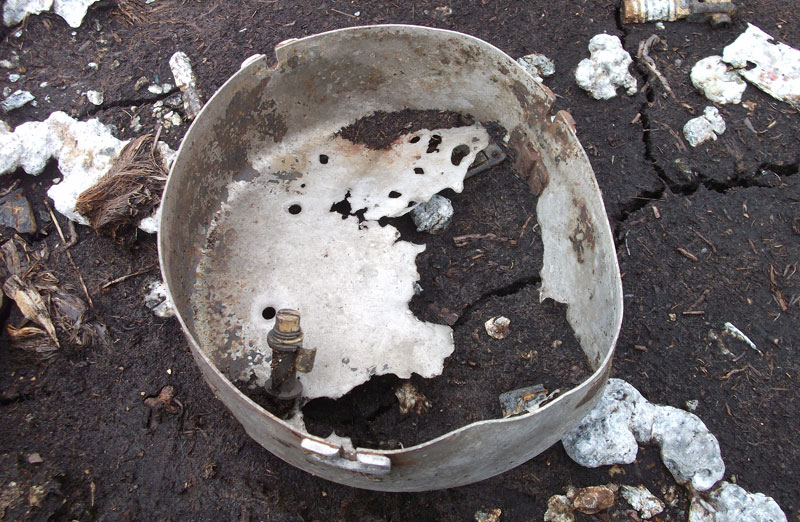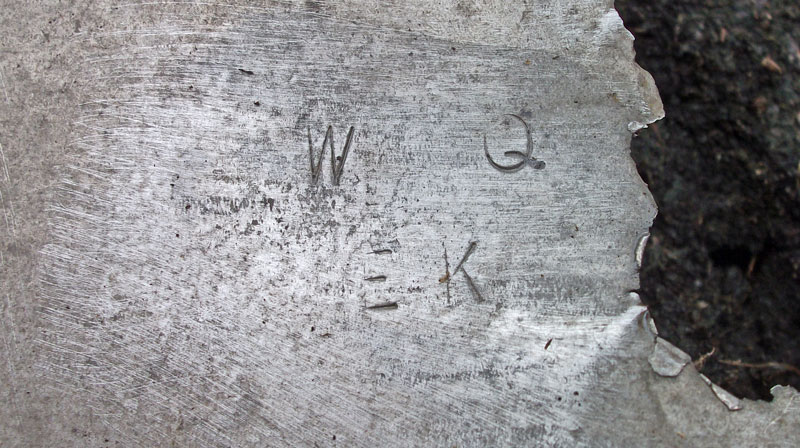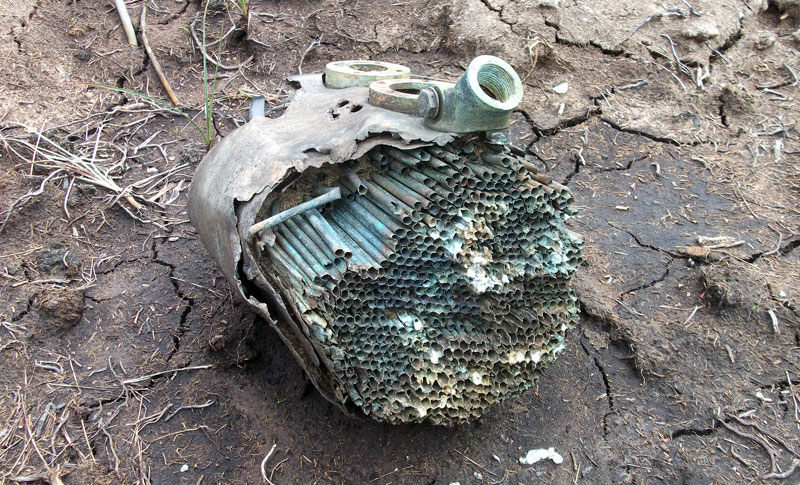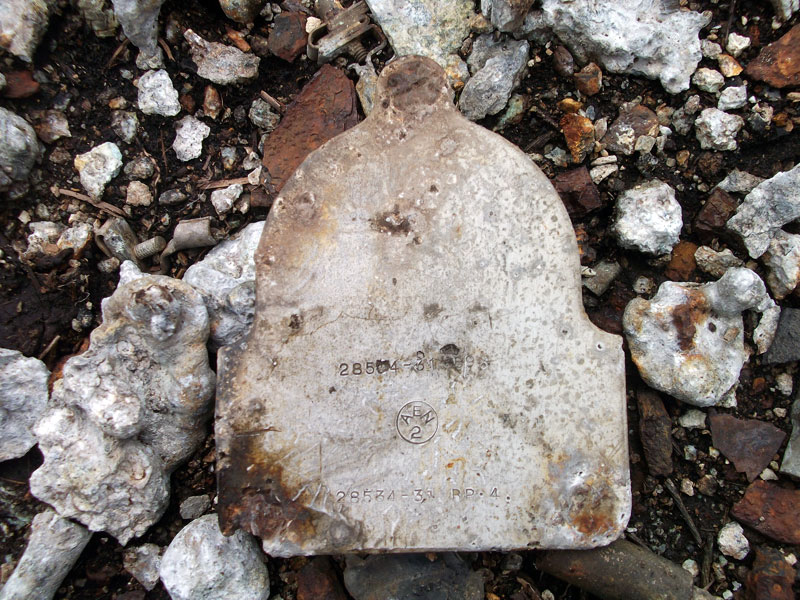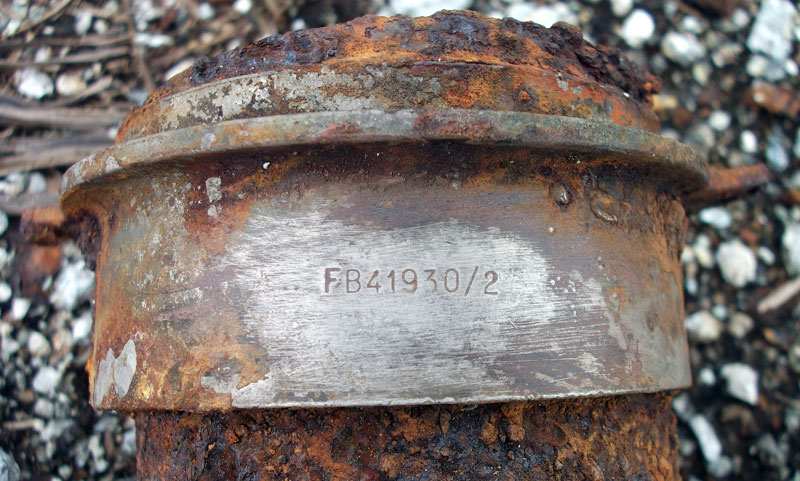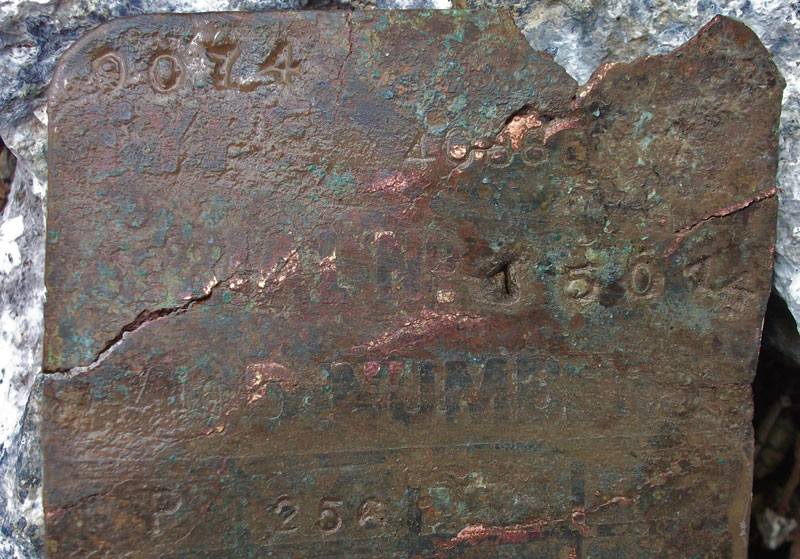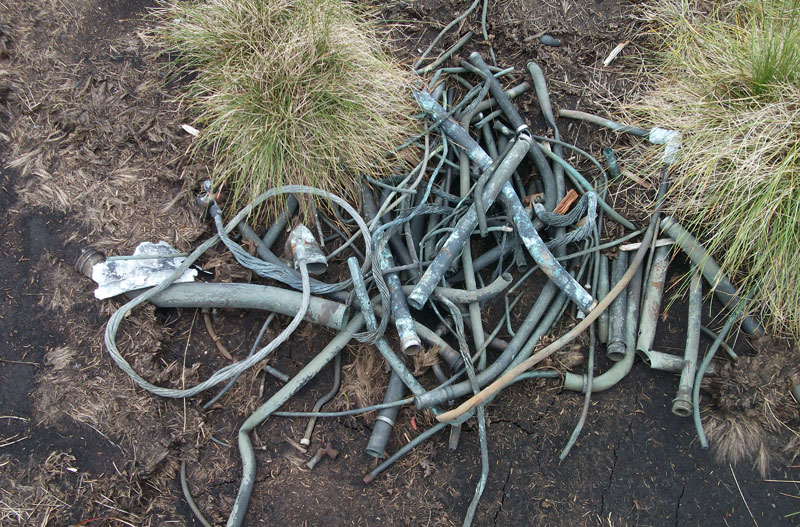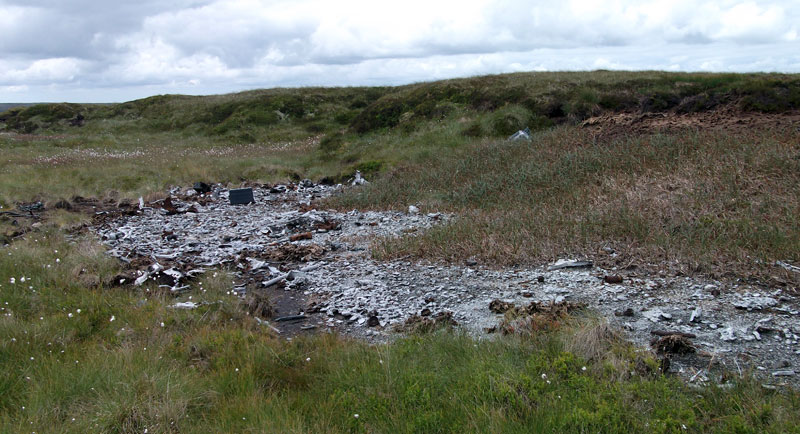Wellington T2715 on Dufton Fell, north of Appleby.
On 20th August 1942 the crew of this 25 Operational Training Unit aircraft were undertaking a night-navigation training flight and had taken off from Finningley at 21.30hrs. The route of the flight was to use turning points after taking off as Darlington, St Bee's Head, Douglas, Mull of Galloway, St Bee's Head, Darlington and return to base. While flying the leg between the Darlington and St.Bee's Head the weather closed in as they crossed the Northern Pennines. The aircraft flew into thick cloud and to get a fix on their position the pilot descended to 2,000ft. The aircraft simply wasn't flying high enough as it crossed
over the area of high ground. On crashing on Dufton Fell the tail section broke off and the rest of the aircraft continued for a short distance before stopping and catching fire, the four crew at
the front end of the aircraft all escaped the burning aircraft, they were lucky in that the aircraft had crashed onto a very flat section of soft moorland but would have had a long walk to find
habitation. The crew were held to blame for the accident as they should have known that they were flying over high ground and therefore should not have descended. Given the remote location of the
crash site little appears to have been removed at the time it was simply chopped up and further burnt.
Pilot - Sgt Basil Glynn Crew RCAF (R/94565). Injured.
Navigator - Sgt Robert Lyster Skillen RCAF (R/79352).
Bomb Aimer - Sgt Hugh William Campbell RCAF (R/95954). Injured.
Wireless Operator / Air Gunner - Sgt Joseph Edward Collinson RCAF (R/78968). (In rear turret at time of crash).
Wireless Operator / Air Gunner - Sgt Harold Nelson RAFVR (969187).
Basil Crew was born on 20th December 1919 in Wawota, Saskatchewan and when he enlisted into the RCAF in Regina, Saskatchewan, Canada on 26th February 1941 he was working
as a hotel clerk at his parents hotel. Upon arrival in the UK he was posted to 6 SFTS/6(P)AFU on 23rd February 1942 and then on to 25 OTU on 16th June 1942, the unit he was
training with when this accident on Dufton Fell occurred. After completing his training at 25 OTU he was posted to 427 Squadron on 1st December 1942, he completed a Tour with
this Squadron for which he was awarded the DFC, Gazetted on 10th September 1943. He was invested with the DFC by King George VI on 11th August 1944, the citation for his DFC
reads.. "As captain of aircraft this officer has successfully completed a number of operational sorties. He has at all times displayed a high standard of courage and efficiency.
His keenness and devotion to duty under difficult and hazardous conditions have been of a high order". After his time with 427 Squadron he spent time at Fighter Command
Headquarters before serving at 1695 (Bomber) Defence Training Flight but took a posting back to 427 Squadron on 13th November 1944 having made his way up through the ranks to
Squadron Leader. He was sadly killed on 5th January 1945 when Halifax NR257 was hit by flak and possibly also damaged by a night fighter and it crashed at Dudensen, Germany.
S/Ldr Crew was killed, he was aged twenty five and is buried at Hannover War Cemetery. The photograph of him shown here was found on "svwm.ca".
Robert Skillen was born on 14th March 1920 in Montreal, Canada but was living in Arvida, Quebec and working as a chemist when he enlisted for RCAF service in Montreal on 21st April 1941. After completing his training he was posted to 427 Squadron. He was later awarded the Distinguished Flying Medal for service with 427 Squadron, notification appeared in the London Gazette on 12th November 1943. He was invested with the DFM by King George VI on 11th August 1944. He survived the War and returned home, he died in London, Ontario on 12th April 1996, aged 76.
I visited the crash site of Wellington T2715 in June 2014, this is one of the North Pennines sites that are probably amongst the most remote in England and prove
difficult to get to. This is one site that probably rarely has attracts a casual passer-by and because of this there is still a lot left at the crash site with some
interesting items in the burnt fragments.
A fuel gauge instrument face.
What I think is the base from the aircraft compass with some markings on it shown below.
A brass cover from an electrical connector.
An oil cooler.
An unidentified cover for something with a typical Wellington part number with the "285" prefix.
This item is probably part of an engine fitting, the "FB" number prefix is common to the Bristol Aeroplane Company and aircraft that used Bristol Pegasus engines as this
Wellington had. I understand "FB" refers to Messers Fedden and Butler who were the designers for Bristol. The engines are actually missing at the crash site and given little
effort appears to have been made to removing anything they could have been buried on site.
A copper modification plate in poor condition.
I have visited a lot of Wellington crash sites in the last fifteen years but have never seen a stainless steel Wellington part with a Wellington part number until now.
Someone visiting the site before me had spent time collecting together all the copper pipes. With the high price of copper today I suspect that these pipes have been
collected up and will soon be in the process of making their way from the site to a scrap man somewhere in Cumbria.
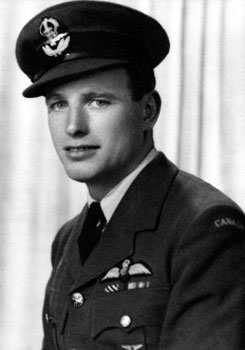
F/O Hugh Campbell was also flying in S/Ldr Crew's crew on 5th January 1945 and was made a PoW.
Joseph Collinson was a son of John George and Marie Collinson, of Camlachie, Ontario and was born in July 1917. He later married of Christena McKeller who had also served in the RCAF. He died in 1977. His brother flight engineer P/O Leslie John Collinson RCAF (C/95228) was killed while flying with 408 Squadron on 29th January 1945 when Halifax NP746 crashed in Germany,
he is buried in Durnbach War Cemetery.
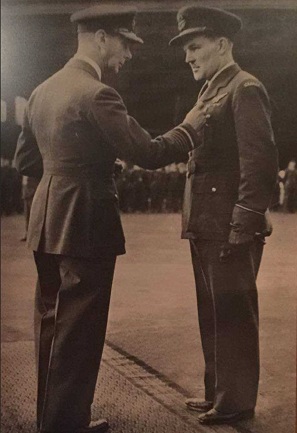
Harold Nelson was born in Doncaster, Yorkshire in 1921 and lived and worked in Wadworth as a farm labourer when he enlisted in 1939. He was also posted to 427 Squadron after completing his training. For service with 427 Squadron he was awarded the Distinguished Flying Medal, Gazetted on 12th November 1943 (the same date as Skillen).

